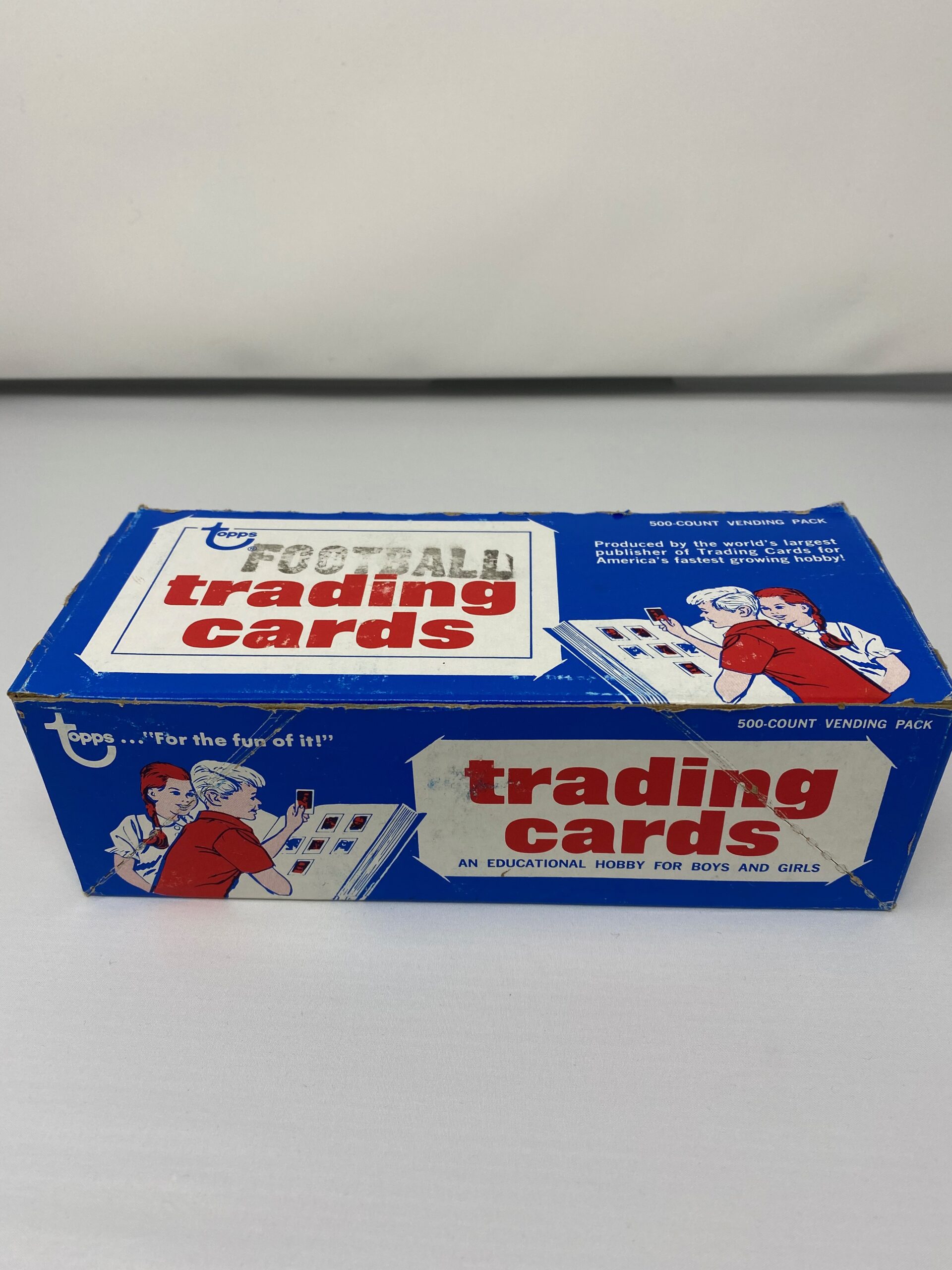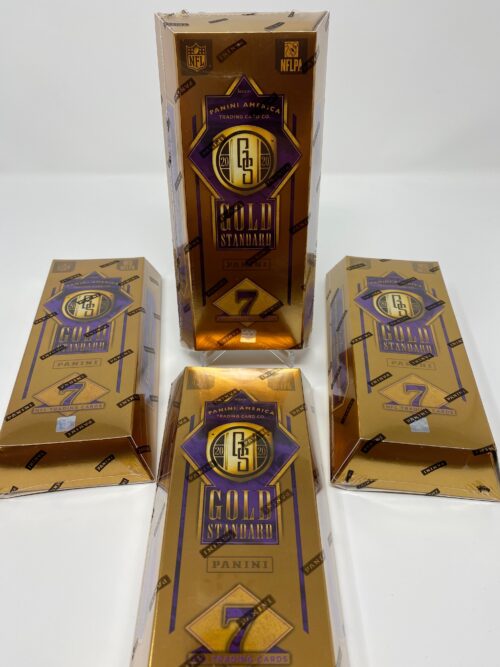Description
Possibly Contains PSA 10s of:
Joe Green (HOF) $1500
Fran Tarkenton (HOF) $1350
O.J. Simpson (HOF) $1400
Larry Csonka (HOF) $800
Johnny Unitas (HOF) $1200
Ray Guy (Rookie) (HOF) $4500
Franco Harris (HOF) $575
Dick Butkus (HOF) $1250
George Blanda (HOF) $600
John Hannah (HOF) Rookie $5000
Roger Staubach (HOF) $1800
The 1974 Topps Football cards feature a player picture that is framed by a goalpost graphic. On the left side of the T-bar below the post is the player’s name, and his position is listed on the right. At the bottom, the team name is shown inside a colored bar. Each team has its own bar and goalpost colors.
1974 Topps Football Cards
Backs feature a football-shaped icon with the card number inside it, along with the player’s position, team and vital stats. To the right of those is a cartoon about the player. The player’s name is then listed across the card. There is a short biography, along with Year/Life stats for many players. At the bottom is a graphic representation of a football field and the result of a play for a game that can be played with the cards.
1974 Topps Football players who are identified as All-Pros (cards #121-144) are given a different design, which eliminates the goalpost altogether. Card #1 celebrates O.J. Simpson breaking the all-time single-season rushing record with an elaborate frame. Cards #328-333 feature the 1973 conference leaders in several statistical categories. Cards #460-463 recap the ’73 postseason games.
Notable rookies from 1974 Topps Football include Joe DeLamielleure, Ray Guy, Bert Jones, Harold Carmichael, John Matuszak, Ahmad Rashad, Chuck Foreman, John Hannah and Ed Marinaro.
Team checklist cards were included in the wax packages but weren’t numbered as part of the set. These again can be found with either one or two asterisks near the copyright info.
There are some other noticeable variations, but they weren’t exactly part of the set that was distributed in wax packages. In 1974, there was a Parker Brothers game that included football cards in it. The cards used the 1974 Topps design, but were slightly different. Originally, they had 1972 stats on the back, and six of the cards were given different designs (three were All-Pros, while the other three had horizontal cards) to match the rest of the ’74 Topps cards. In all, 50 cards were included in the Parker Brothers game, which can be confusing to collectors who aren’t aware of them.



